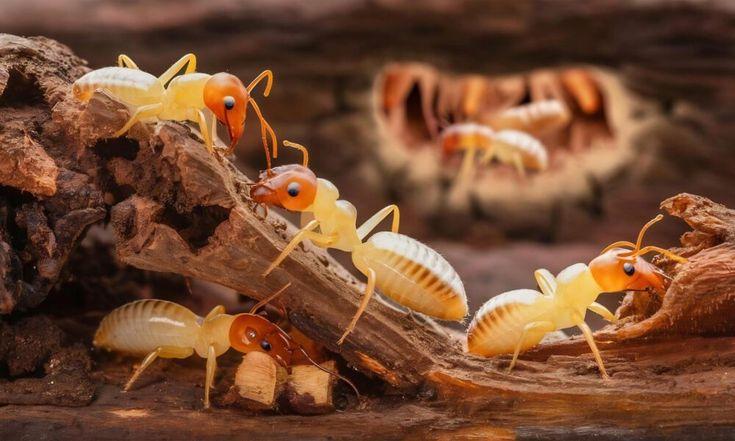Termite Control: Effective Strategies to Protect Your Home from Costly Damage

Termite Control: Effective Strategies to Protect Your Home from Costly Damage
Termite Control are silent destroyers that can cause extensive damage to homes, often before the problem is even noticed. Every year, termites are responsible for billions of dollars in property damage globally, making termite control not just important, but essential. Whether you’re a homeowner, property manager, or real estate investor, understanding how to prevent, identify, and eliminate termite infestations can save you from expensive repairs and structural damage.
In this comprehensive guide, we’ll cover what termite control involves, the different types of termites, signs of infestation, and the most effective prevention and treatment methods available today.
What is Termite Control?
Termite control refers to the practices and treatments used to prevent, detect, and eliminate termites from structures and property. It includes both proactive measures to prevent termites from entering and reactive solutions once an infestation has occurred.
Control strategies generally fall into two main categories:
-
Preventive termite control: Steps taken to avoid a termite problem before it starts.
-
Corrective termite control: Treatments applied after termites have been detected.
Types of Termites
There are over 2,000 species of termites worldwide, but the three most common types that affect homes are:
-
Subterranean Termites
These termites live in soil and build mud tubes to access food sources. They are the most destructive type, often attacking foundations and wooden structures. -
Drywood Termites
Unlike subterranean termites, drywood termites live in the wood they consume. They don’t require soil contact and can infest furniture, hardwood flooring, and structural timber. -
Dampwood Termites
These are usually found in moist and decaying wood. While less common in homes, they can still cause significant damage if high moisture levels are present.
Signs of a Termite Infestation
Recognizing a termite infestation early can prevent major structural damage. Look out for these signs:
-
Mud tubes on walls, foundation, or crawlspaces (common with subterranean termites).
-
Discarded wings near windowsills or doors (swarmers or reproductive termites).
-
Hollow-sounding wood or visibly damaged timber.
-
Frass (termite droppings) which looks like fine sawdust (common with drywood termites).
-
Bubbling or uneven paint indicating moisture from termite activity.
Termite Inspection: Why It's Crucial
Regular inspections are a key component of effective termite control. Professionals recommend a termite inspection at least once a year, especially in high-risk areas. A thorough inspection includes:
-
Examining the foundation and crawl spaces.
-
Checking for mud tubes and wood damage.
-
Probing wooden structures with tools.
-
Using moisture meters or thermal imaging to detect hidden activity.
Termite Prevention Tips
Preventing termites starts with reducing access to food, moisture, and shelter. Here are some proven termite prevention tips:
-
Eliminate wood-to-soil contact around the foundation.
-
Fix leaks in plumbing and ensure proper drainage.
-
Ventilate crawl spaces to reduce moisture.
-
Seal cracks and crevices in the building’s exterior.
-
Store firewood away from the house and off the ground.
-
Use termite-resistant building materials, such as treated lumber.
Termite Treatment Options
If termites are found, prompt treatment is essential. The appropriate solution depends on the species and extent of infestation.
1. Liquid Termiticides
Applied to the soil around the home, these create a barrier that either repels or kills termites. Common in treating subterranean termites.
2. Termite Baits
Bait stations are placed in the ground to attract termites. They consume the bait and carry it back to the colony, gradually eliminating it.
3. Fumigation
Used primarily for drywood termite infestations, fumigation involves sealing the structure and filling it with a gas that kills termites throughout the building.
4. Direct Wood Treatments
Termiticides can be injected into wood to treat localized drywood termite infestations.
5. Biological Termite Control
This involves using beneficial nematodes or fungi to attack termite colonies. It’s a more eco-friendly option, though still emerging in terms of effectiveness and availability.
Professional Termite Control vs. DIY
While some homeowners attempt DIY termite control using over-the-counter sprays and bait, professional help is usually necessary for complete eradication. Termite behavior is complex, and incomplete treatment can lead to re-infestation.
Benefits of hiring professionals:
-
Accurate identification of termite species.
-
Proper application of termiticides and bait systems.
-
Access to industrial-strength treatment options.
-
Long-term warranties and follow-up inspections.
Cost of Termite Control
The cost of termite control can vary widely based on the treatment type, infestation size, and location. Here's a general range:
-
Inspection: $75 to $150 (often waived if treatment is purchased).
-
Liquid treatment: $3 to $12 per linear foot.
-
Bait system installation: $1,000 to $2,500 total.
-
Fumigation: $1,200 to $4,000 depending on the size of the home.
Investing in termite prevention or early treatment is always cheaper than repairing the damage caused by an established infestation.
Long-Term Termite Protection Plans
Many pest control companies offer annual termite protection plans, which include:
-
Regular inspections.
-
Bait system maintenance.
-
Re-treatment guarantees.
-
Emergency call-outs if activity is detected.
Such plans provide peace of mind, particularly in termite-prone regions.
Eco-Friendly and Integrated Termite Control Approaches
The modern approach to pest control is increasingly shifting toward Integrated Pest Management (IPM). This method combines biological, physical, and chemical tactics for a more sustainable solution.
IPM focuses on:
-
Monitoring termite activity.
-
Using low-toxicity treatments.
-
Improving building design and maintenance.
-
Educating homeowners on termite behavior and prevention.
Conclusion
Termite control is a critical aspect of home maintenance, especially in regions prone to infestations. By understanding termite behavior, recognizing signs of infestation, and implementing a mix of prevention and professional treatment strategies, you can protect your home from severe and costly damage.
Whether you choose preventive measures or need corrective treatment, it’s crucial to act quickly and consult with pest control experts to ensure thorough and long-lasting results. In the fight against termites, vigilance, knowledge, and prompt action are your best allies.
- Art
- Causes
- Crafts
- Dance
- Drinks
- Film
- Fitness
- Food
- Jogos
- Gardening
- Health
- Início
- Literature
- Music
- Networking
- Outro
- Party
- Religion
- Shopping
- Sports
- Theater
- Wellness



